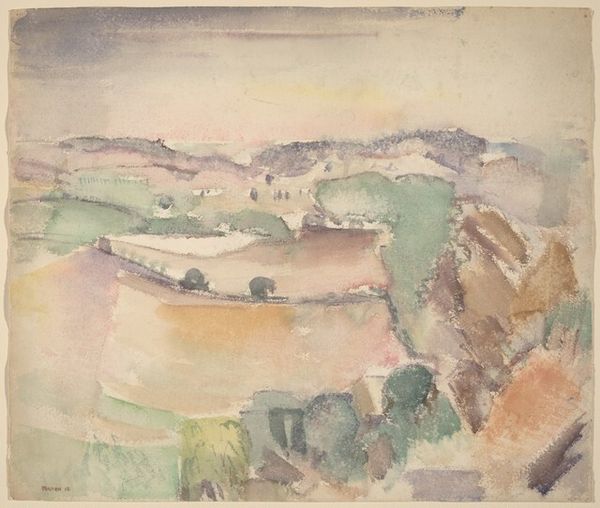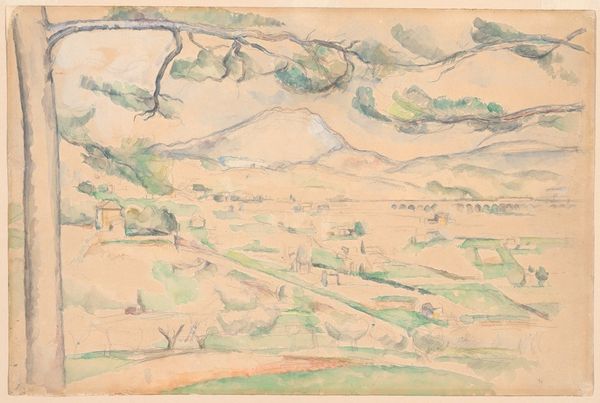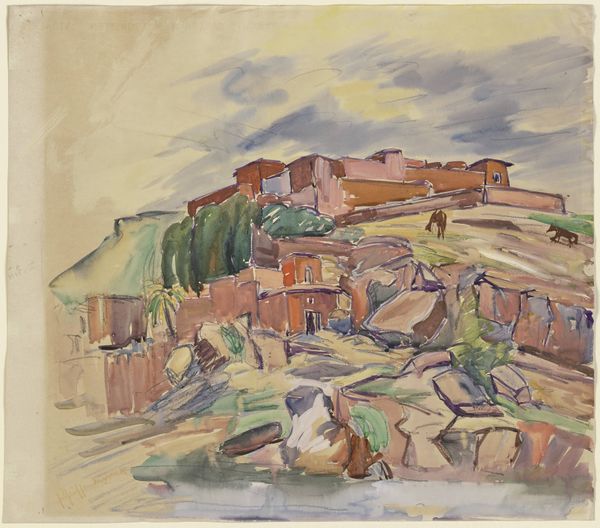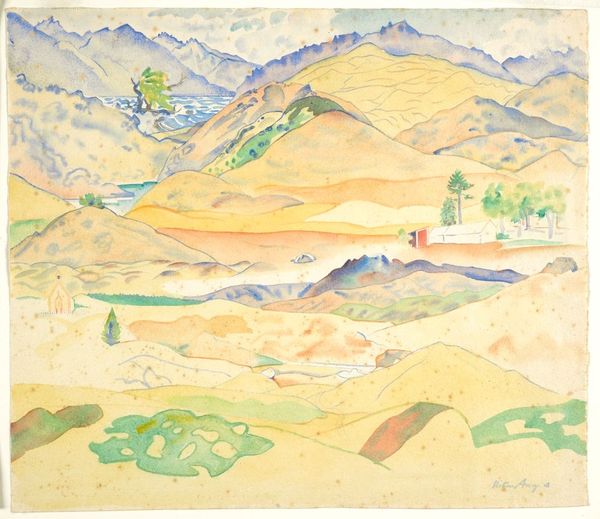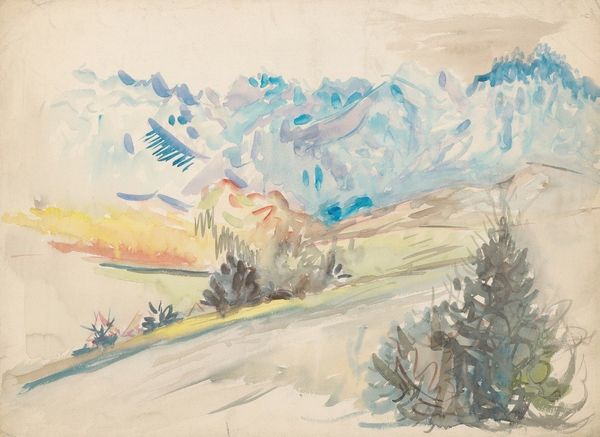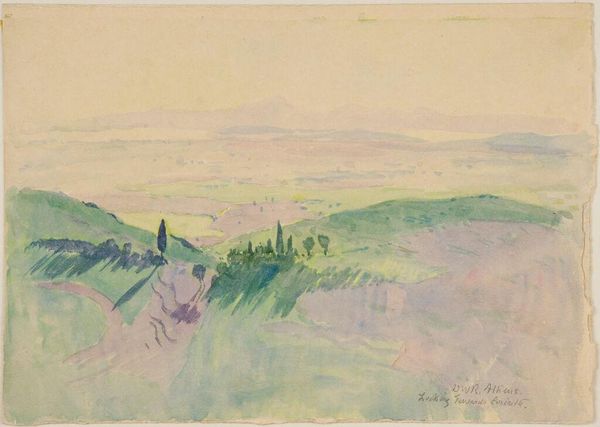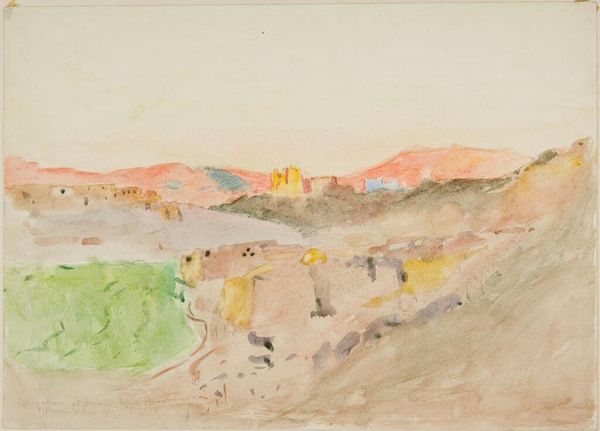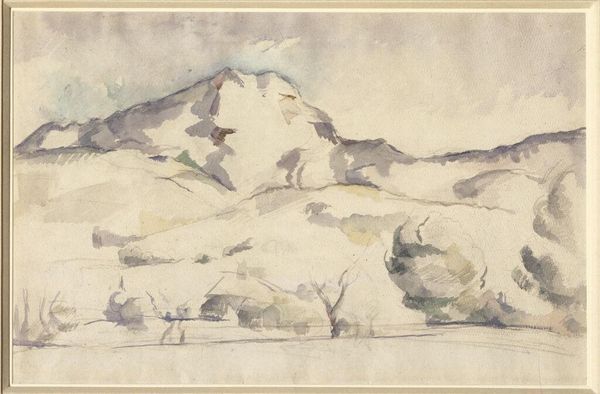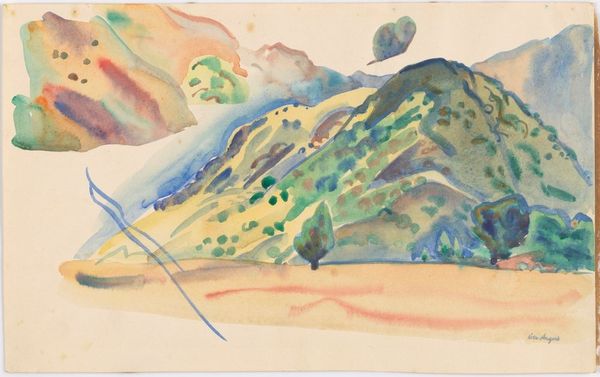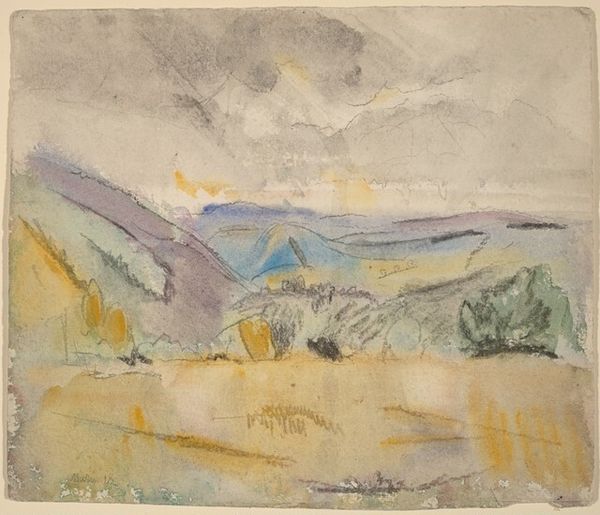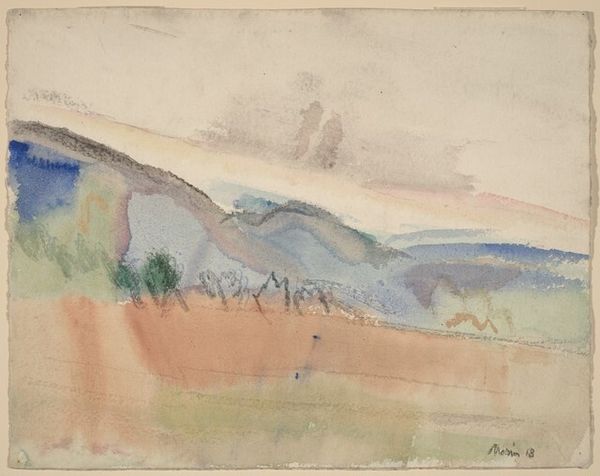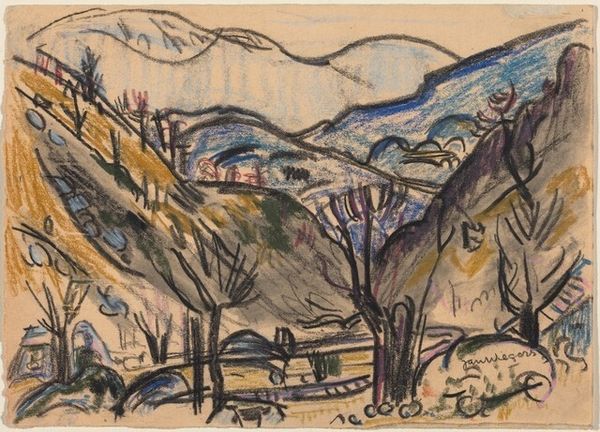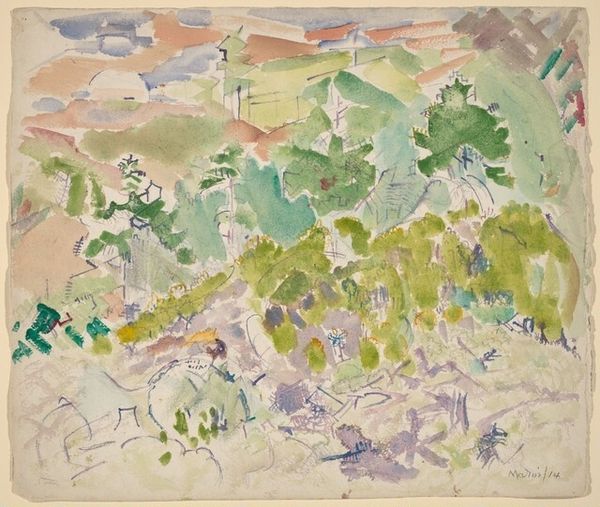
plein-air, watercolor
#
water colours
#
impressionism
#
plein-air
#
landscape
#
watercolor
#
post-impressionism
Copyright: Public Domain: Artvee
Curator: The lightness of the watercolor in Paul Cézanne’s work here—Château Noir and Mont Sainte-Victoire, dating to about 1890 to 1895—gives it such an ephemeral quality. What’s your impression? Editor: It's as if the scene is veiled in mist. The washes of color feel tentative, fleeting. You see the barest indications of form; the mountain is massive but also dissolving. Curator: Well, Cézanne was quite concerned with capturing fleeting sensations and his artistic goal was a steadfast and singular pursuit of nature’s truth, and of conveying it, via art, to an increasingly industrial and commercial public that may have lost touch with its natural rhythms. This perspective also influenced and gave courage to emerging expressionists to push their art towards more abstract directions in service of conveying inner truths, and to challenge conventions of how, where and by whom art was appreciated and supported. Editor: I am intrigued by the color selection—the delicate blues, greens, and touches of red and ochre that make up the composition. See how they build these planar facets within the landscape. It is almost like he is analyzing the visual world using watercolor. Curator: Precisely! The Post-Impressionists wanted to push beyond merely depicting impressions of light. What might seem like looseness also speaks to Cézanne’s interest in formal structure, with an application and visual weighting that defies convention at the time, like making sketches that could be hung next to highly finished and revered landscapes. Editor: So the social value of plein air shifts in late nineteenth century art—more egalitarian, more spontaneous. There’s a feeling of discovery here. It’s refreshing. Curator: Very well stated. Cézanne, indeed, contributed much to our understanding of the rapidly changing worlds of nature, art and societal structures. Editor: Agreed. Its delicate balance evokes feelings of both serenity and subtle transience, as well as visual solidity and purpose, so at peace with its own materiality.
Comments
No comments
Be the first to comment and join the conversation on the ultimate creative platform.
